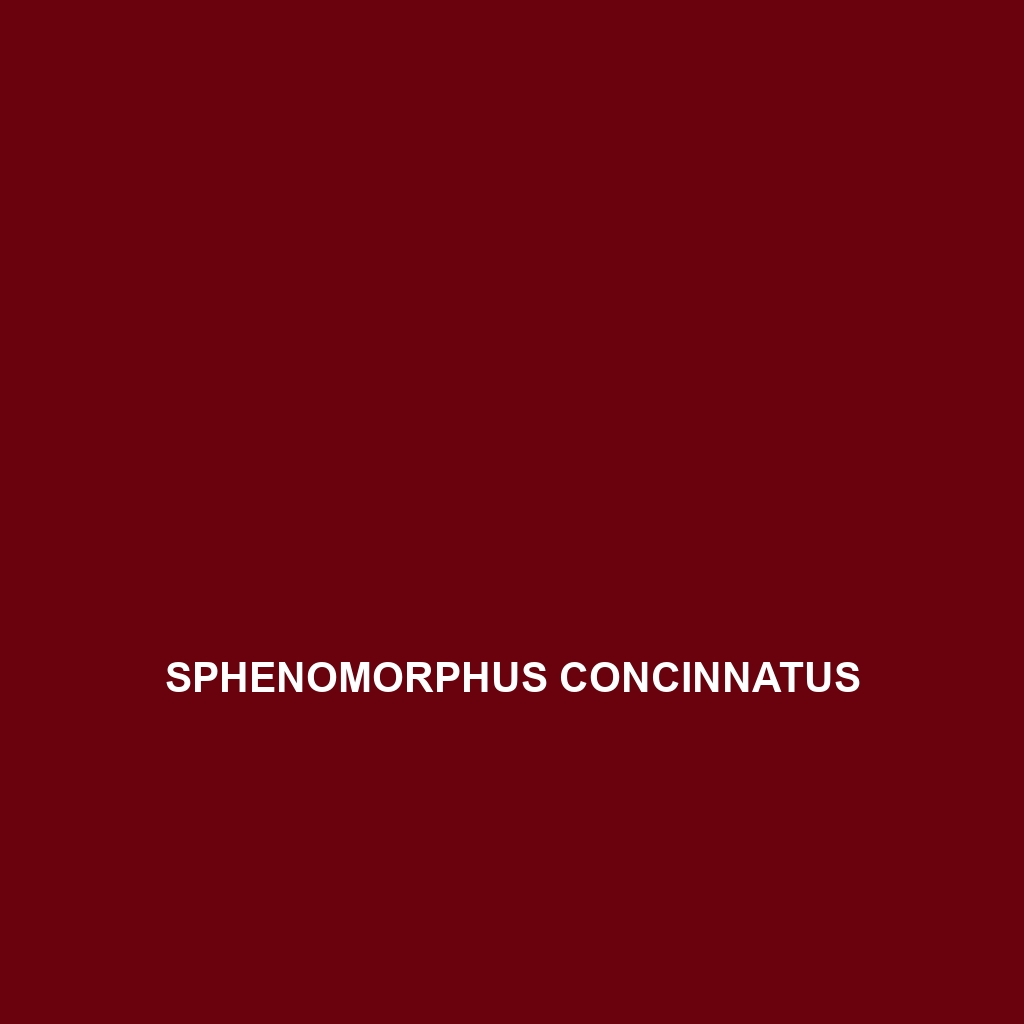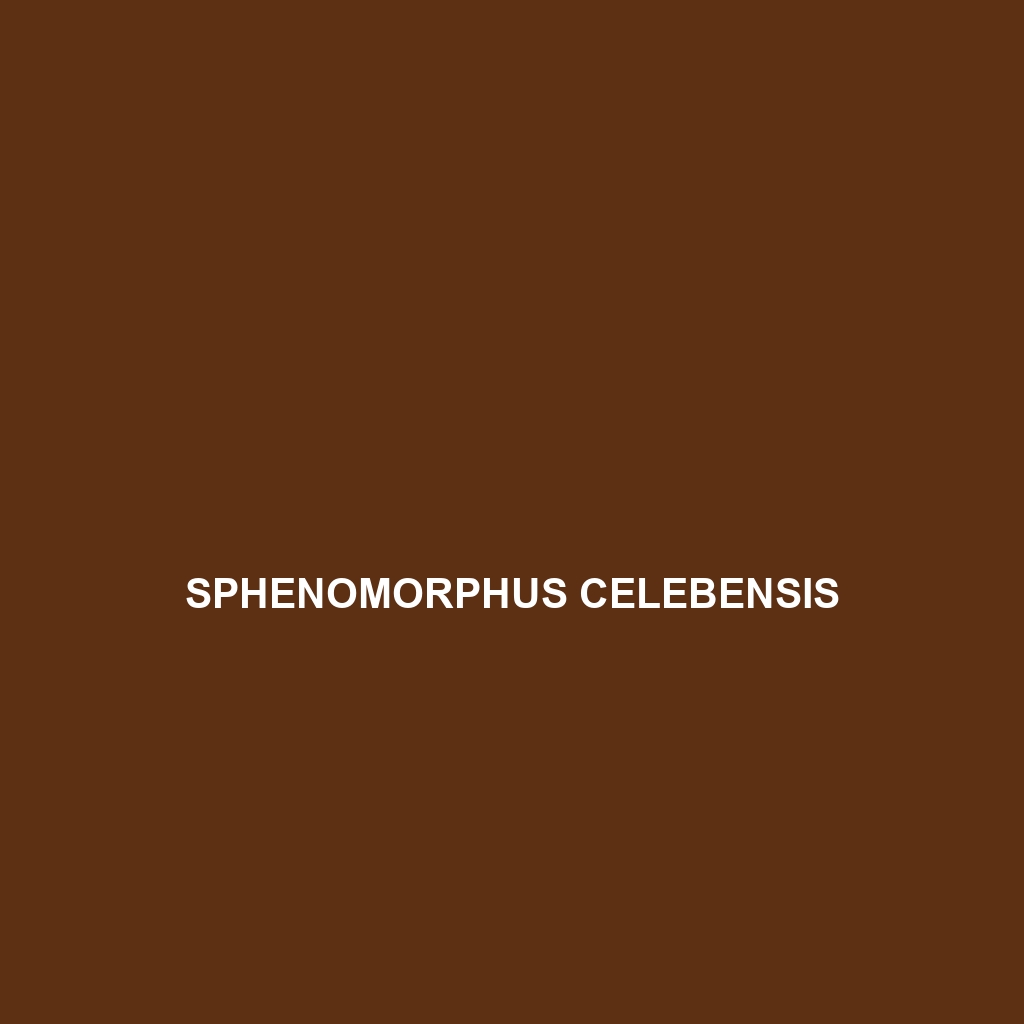<b>Sphenomorphus concinnatus</b>, commonly known as the elegant skink, is a diurnal insectivorous lizard native to the tropical rainforests of Southeast Asia. Characterized by its glossy brown to dark green coloration and smooth, shiny skin, it plays a vital role in its ecosystem by regulating insect populations and serving as prey for larger animals.
Tag: insectivorous reptiles
Sphenomorphus cinereus
<p>The <b>Ashy Skink (Sphenomorphus cinereus)</b> is a tropical and subtropical skink known for its slender body and distinctive grey to brown coloration, thriving in humid rainforest environments of Southeast Asia. This diurnal insectivore plays a vital role in controlling insect populations while exhibiting fascinating behaviors and minimal parental care postpartum.</p>
Sphenomorphus celebensis
Introducing the Sphenomorphus celebensis, or Celebes skink, a striking lizard native to the rainforests of Indonesia, particularly Sulawesi. This diurnal, insectivorous species is known for its glossy brown or olive-green coloration, distinctive stripes, and ability to regenerate its tail, making it a vital contributor to the ecosystem.
Sphenomorphus cameronicus
<p><b>Sphenomorphus cameronicus</b>, native to the lush rainforests of Cameroon, is a vibrant, insectivorous species exhibiting striking earth-toned coloration, smooth scales, and unique autotomy behavior. This fascinating reptile plays a vital role in its ecosystem by managing insect populations and promoting soil health.</p>
Sphenomorphus buettikoferi
Discover the fascinating Buettikofer's skink (Sphenomorphus buettikoferi), a medium-sized, agile reptile found in the humid tropical rainforests of Southeast Asia. Known for its smooth, shiny scales and effective camouflage, this insectivorous skink plays a crucial role in maintaining ecological balance by controlling insect populations and serving as prey for larger predators.
Sphenomorphus anotus
Discover the fascinating Sphenomorphus anotus, a medium-sized lizard thriving in Southeast Asia's tropical rainforests, featuring vibrant brown and green scales for perfect camouflage. Known for its insectivorous diet and unique adaptability, this species plays a crucial role in its ecosystem by controlling insect populations and supporting biodiversity.
Sphenomorphus aignanus
Discover the fascinating Sphenomorphus aignanus, commonly found in Southeast Asia's lush rainforests. This slender, diurnal reptile exhibits a distinct brown or olive green coloration with bright dorsal markings, plays a vital role in controlling insect populations, and exhibits unique behaviors, including intricate mating rituals and exceptional camouflage abilities.
Sphaerodactylus underwoodi
Discover the unique <b>Sphaerodactylus underwoodi</b>, a small nocturnal lizard native to the lush rainforests of the Caribbean, characterized by its slender body, smooth scales, and vibrant mating displays. With a diet primarily consisting of insects, this vulnerable species plays a vital role in maintaining ecological balance within its environment.
Sphaerodactylus sommeri
<p>The <b>Sphaerodactylus sommeri</b>, or Sommer's dwarf gecko, is a small, nocturnal insectivore typically measuring 4 to 5 inches, found mainly in the tropical rainforests of Puerto Rico. Known for its distinctive coloration, excellent climbing abilities, and fascinating reproductive behaviors, this gecko also plays a crucial role in controlling insect populations and maintaining ecosystem balance.</p>
Sphaerodactylus roosevelti
Sphaerodactylus roosevelti, commonly known as Roosevelt's gecko, is a small, nocturnal lizard native to the tropical rainforests of Puerto Rico, characterized by its robust body, prehensile tail, and distinctive earthy coloration. Primarily insectivorous, this vulnerable species plays a crucial role in its ecosystem as both predator and prey, contributing to pest control and serving as a food source for larger animals.









